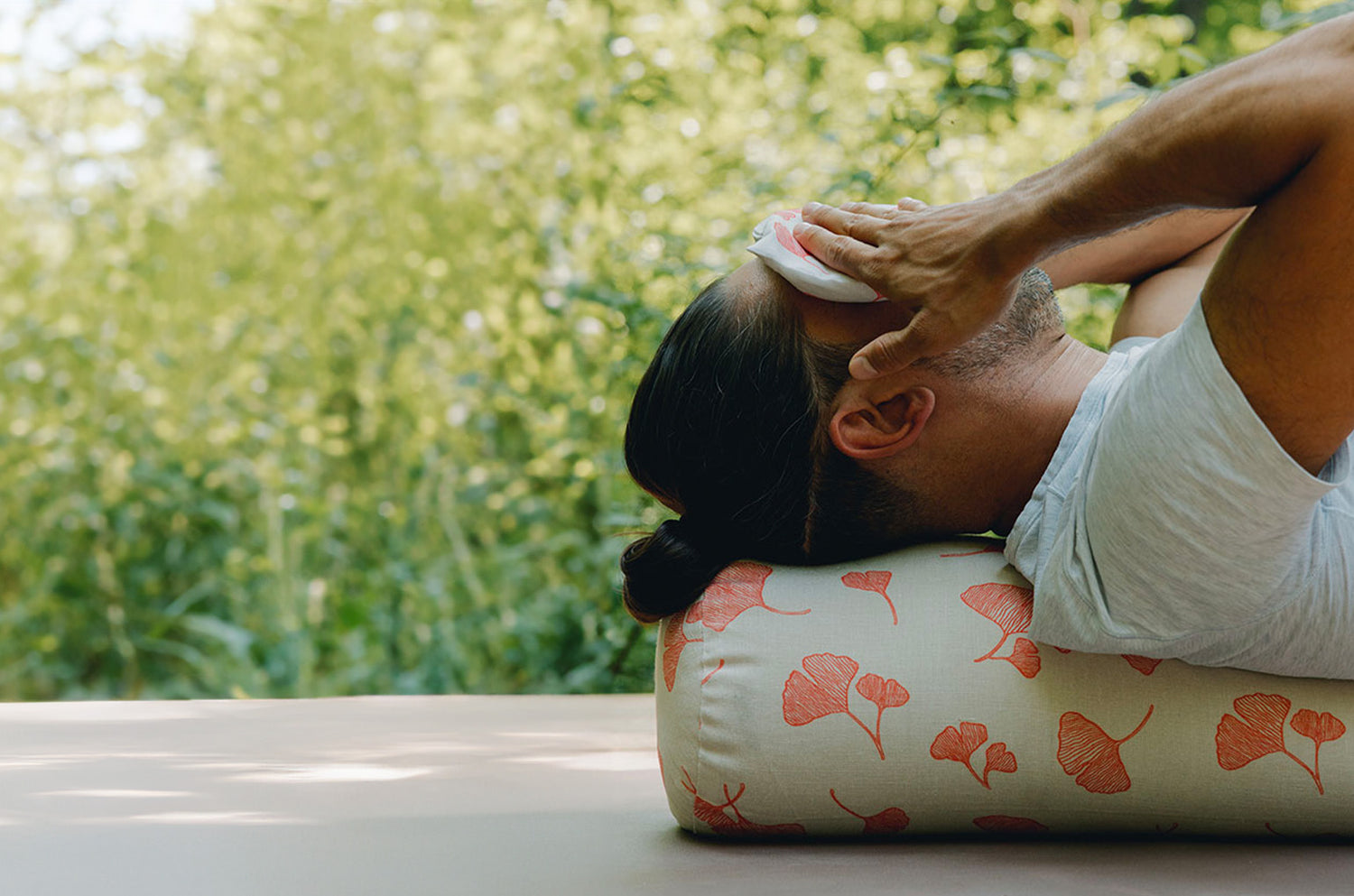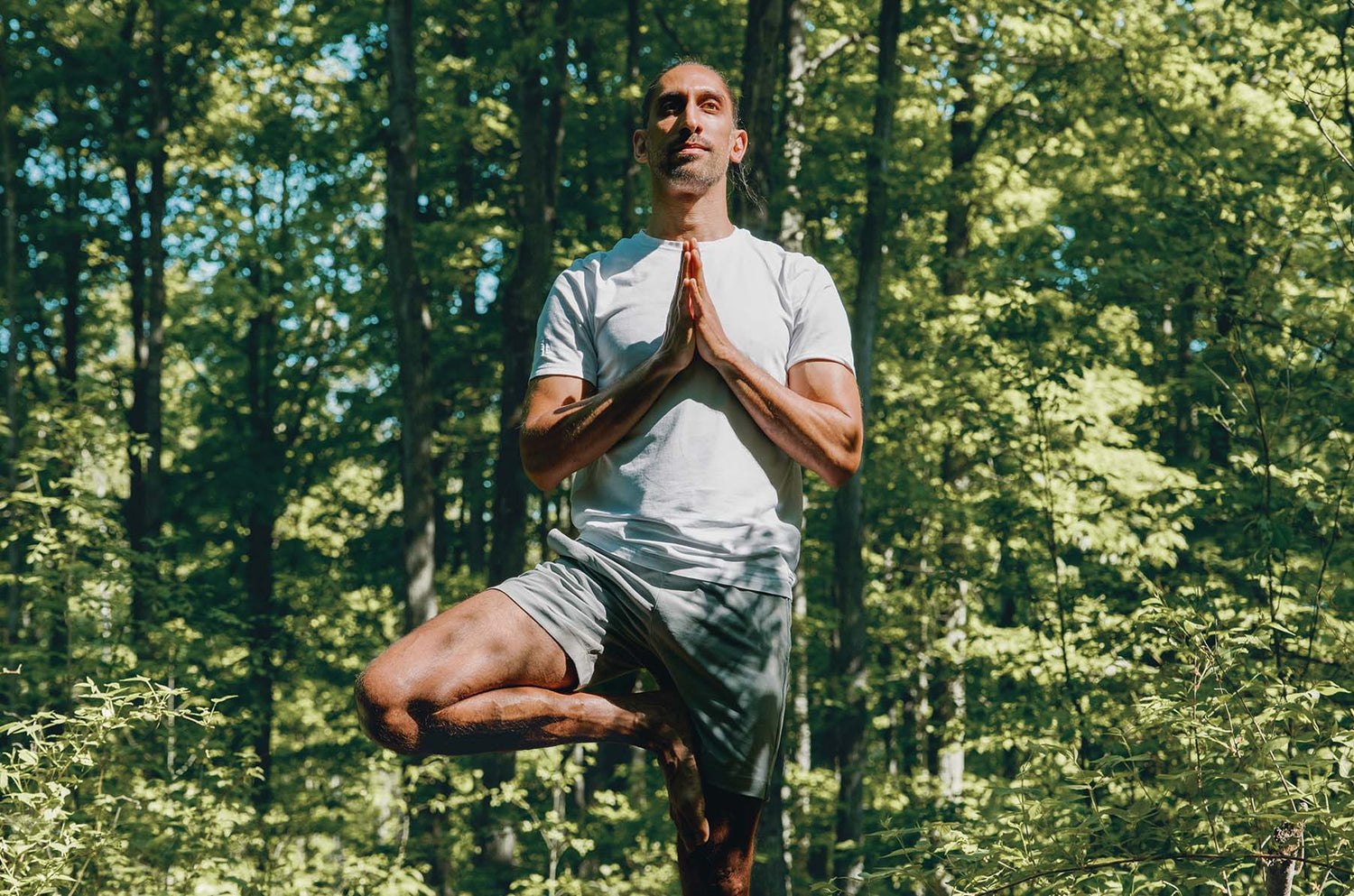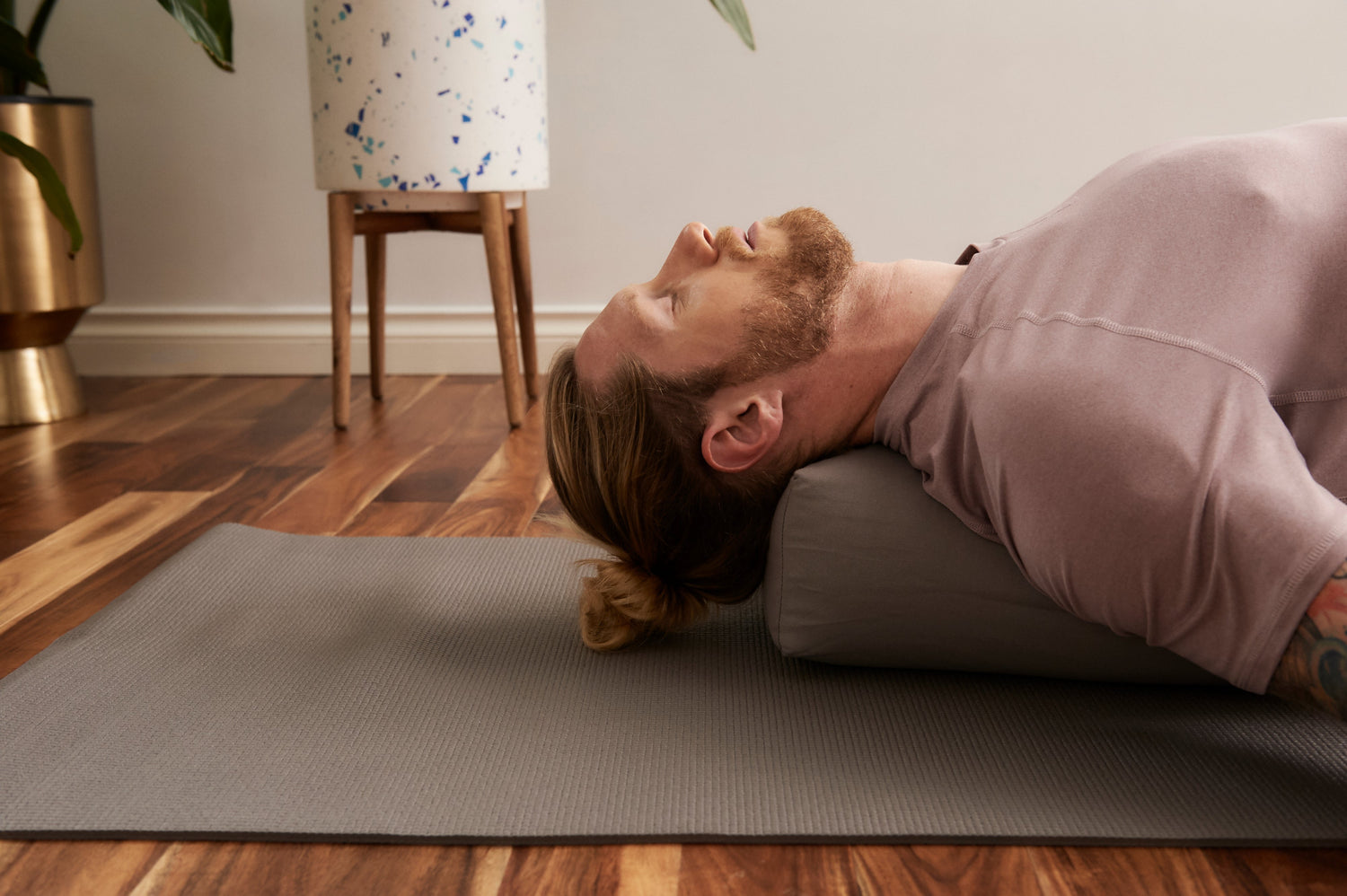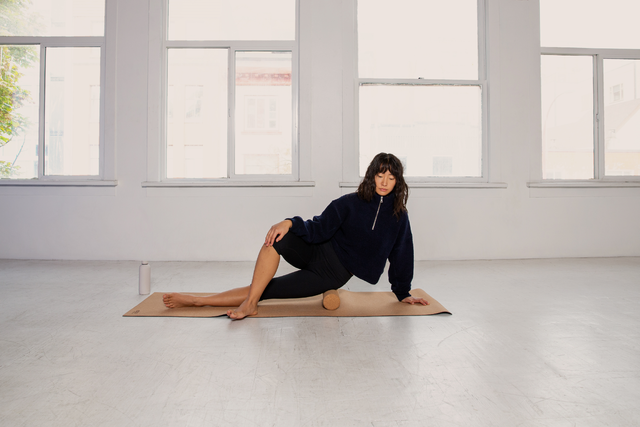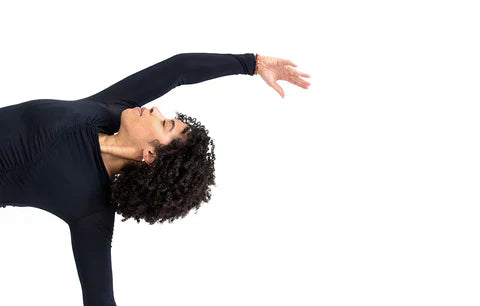In the darker winter months it can be easy to spend a lot of time on the couch feeling less energetic than usual. Bringing added heat to your yoga practice can offer you the balance and energy you need to ignite your motivation and passions during this time. As you move into your practice, listen to your body—take breaks in child’s pose when you need rest, and challenge yourself with longer holds when you want to build more heat.
What you’ll need:
- Two yoga blocks
- One loop strap
- Candle or fireplace
To stay connected with your own internal fire, begin this energizing winter sequence by lighting a candle (or a fire if you have a fireplace). Gather your props—they will connect you to the strength and stability of your core and shoulders. Find a comfortable seat on your block, cushion or blanket, and take a few cleansing breaths to help you become more present in the moment. Breathe, and picture your own internal fire, an energy source starting to build from the centre of your chest. Now is a good time to focus on an idea, a passion project, or a person that you’d like to send energy towards during your practice. Breathe into that idea and imagine your fire growing with each breath.
When you feel ready, come to kneeling or a standing position to begin.

Shoulder opening with strap
To open your practice, take hold of a strap, standing tall on your knees. Feel free to place a block between your thighs to feel an engagement through your lower core. Extend your hands over your head, keeping your core engaged and your shoulders pulling together on your back. Bringing your arms a little wider than shoulder width, feel the extension in your side body and arms and slowly, with your breath, bring your arms over your head and behind your body, keeping your arms straight and feeling opening into the shoulders and front of the chest. As your chest opens, you can gradually bring your arms closer together on the strap.

Chair pose with block
Squeeze the block with your legs, firing up the inner lines of your thighs and your deep core. Feel your inner thighs rolling in and down, actively engage your abdominal muscles to keep your spine long. Feel the weight of your body evenly in the corners of your feet. Play with arm variations to bring more fire into the pose.

Boat pose
Time to feel your core really fire up! Navasana, or full boat pose is a great way to build heat in your body. Balancing on your sits bones, press the balls of your feet into the strap, extending your legs and using your core. Remember to breathe. Using the strap here will remind you to keep your shoulders down and relaxed. To modify, keep your knees bent to 90 degrees.

Forearm plank with strap
Dolphin plank—a staple in any core sequence. Here, keeping your elbows no wider than shoulder width apart, use your strap to ensure you’re engaging your triceps, shoulders and core. Keep your shoulders in line with your hips, and your hands flat on the floor. This engagement and shoulder stabilization will help prepare you for arm balances such as forearm stand.

Side plank with block
In side plank, you want to engage your entire body - not just your obliques! Using a block in between your thighs will keep your legs strong and your hips lifted. Roll your inner thighs in, and keep a small space between your heels—mimicking tadasana, or mountain pose. Tilt your pelvis in towards your belly button, and feel the block move forward. Repeat on both sides, resting in child’s pose in between sides if desired.

Half splits with hands on blocks
Hands up if even the thought of hanumanasana (half splits) makes you sweat? Using blocks to bring the floor closer to you in half splits will make the pose more accessible—but no less challenging. Use the blocks on any height to ensure your back is straight, your hips are even, you feel a stretch through the back of you leg and your toes are pointing back towards your shin. Place a blanket under your back knee if you require any extra padding.

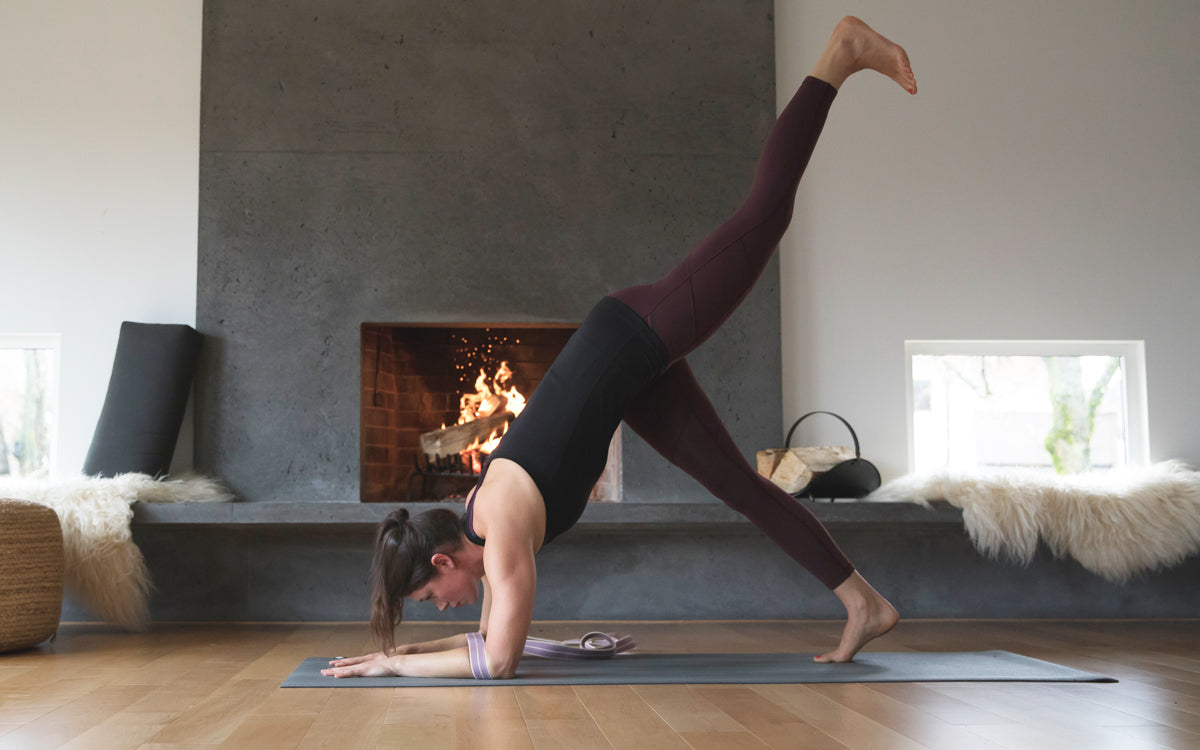
Forearm stand or dolphin pose
Building on the strength and heat we’ve already built in forearm plank, our next pose is dolphin pose, building up into a full forearm stand, or pincha mayurasana. Using the strap above or below the elbows to keep them shoulder width apart. If you like, use a block between your hands—this prevents the arms from moving inwards by stabilizing the shoulders. To work towards the full arm balance, begin in dolphin pose, and walk your feet in as close to your face as possible. Try to stack your hips right over your shoulders and elbows. Begin by lifting one leg, and then the other. If this is comfortable, start with little hops, keeping your top leg as straight as possible. Use a wall if you are planning on attempting the arm balance.

Full wheel with block
While props are often used for restorative backbends, they are also useful for building strength and adding fire to your practice. Before pushing up into wheel pose place a block between your thighs or wrap a strap just above your knees. This will keep your feet at hip distance apart, and ensure your thighs are engaged and your knees and toes are pointed forwards, so there is no torquing at the joints.

Savasana
After firing up your practice, make sure you take the time for a nice long savasana. There are so many ways to make savasana even juicier using props! Here, you can see that placing the bolster underneath your knees allows your back to settle more comfortably onto the ground, maintaining the natural curvature in the spine. Place your hands on your mat to your side, or one hand on heart and one hand on belly to feel your breath start to slow.
















